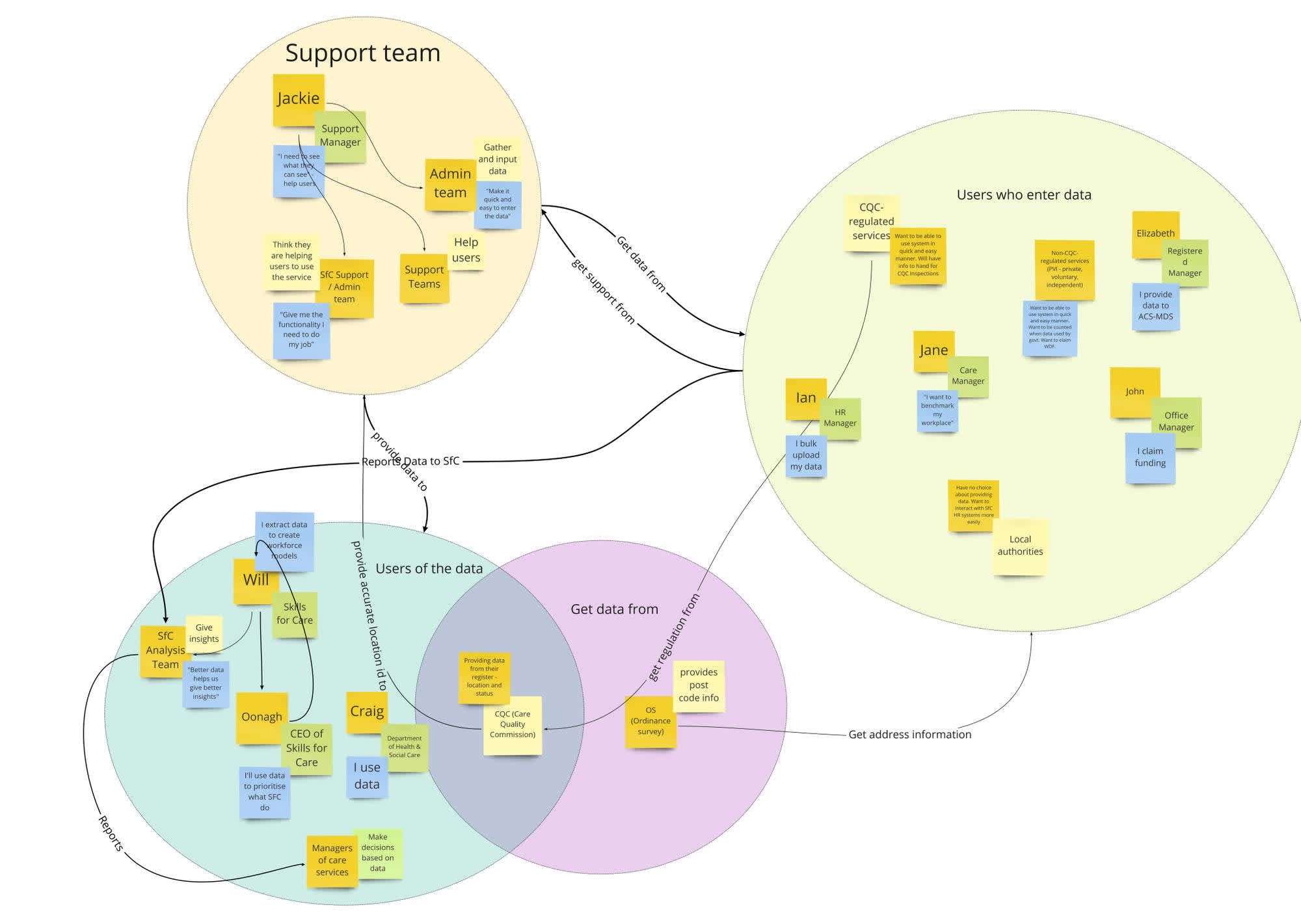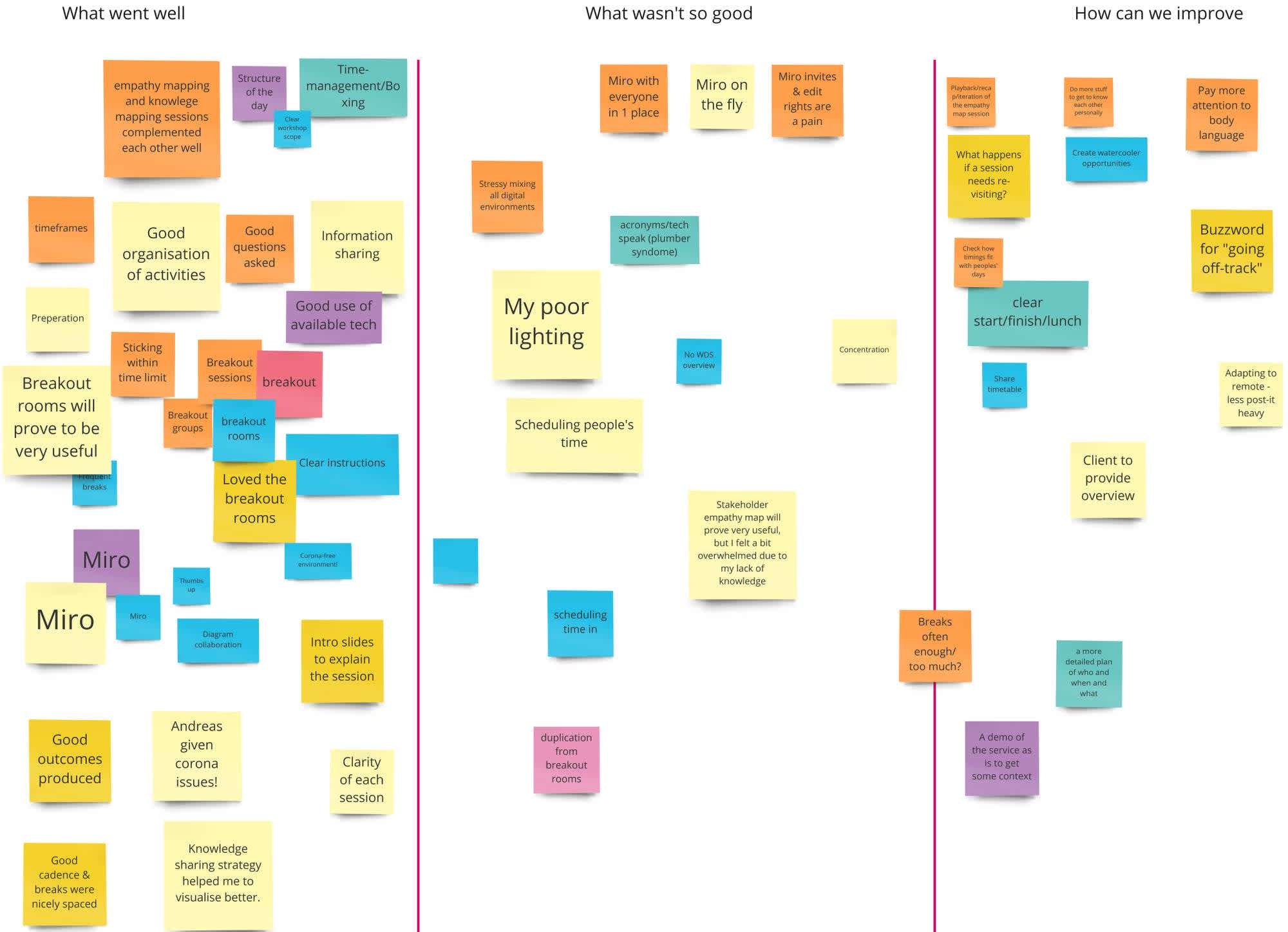
From one digital partner to another
On Adult Social Care Workforce Data Set (ASC-WDS) we have moved from one digital partner to another, a digital partner is an organisation that Skills for Care work with to provide additional resources for example developers. Here's how it worked in the coronavirus outbreak.
On Adult Social Care Workforce Data Set (ASC-WDS) we have moved from one digital partner to another, a digital partner is an organisation that Skills for Care work with to provide additional resources for example developers. This has meant a lot of changes over the past couple of months. We have had to say goodbye to people who have worked on the project for 2 years and say hello to a whole new team.
Not only have we had to change digital partners, but we have also had to do it amid COVID-19. We have had a 2 week inception period, which helped them gain experience in the project. The inception happened alongside 2 weeks of handover from the old digital partner to new. It was an intensive couple of weeks but here are some of the tools that helped us along:
- This lets us have space where we can virtually put post-it notes. Before lockdown the plan was to have workshops in the office in Leeds this lets us have a similar experience.
- This lets us communicate as a group as a whole or break out into smaller groups to work together. It allows us to share our screen while still being able to see each other.
- This lets us plan the days with what tasks need to be completed each day. This was especially useful when we knew after 31st March, we would no longer have the old supplier on hand.
- This lets us communicate with each other. This was useful to get an answer from a group or an individual. We use slack because we are working across two organisations but you could use teams to communicate in the same way with your internal colleagues.
These helped us have a smooth experience in the circumstances.
The new supplier planned the inception period to help them understand the project. This included sessions on who's who and drawing a stakeholder map among others.

This helps everyone understand who the main users are of the service. ASC-WDS is a user-focused project and understanding the users is a key goal for the new supplier. This helps to keep the focus on how the service should work, whether it's easy to use etc.
There's lots of knowledge on the project which needed sharing between the old partner and the new or to Skills for Care itself. Handover sessions with the various team members from both agencies happened over Zoom. This meant any technical tasks were recorded and watched back if we needed to as you can record your meetings really easily in zoom.
We work in an Agile way. One of the things we adopted in the inception was a daily retrospective (retro). A retro lets everyone share things they think went well, things that didn't go well and how things can be improved. It is an opportunity to reflect and improve as team.

This helped keep us on track as if someone had a problem, thinks things can be improved, etc. they have a place they can talk about it. Things brought to a retro are usually anonymous, and the author has the opportunity to share and expand on things if they want to. The items are then talked about with the wider team to understand if anyone else has similar issues or experiences. Following this, actions will emerge on how to improve, in this case in the following days.
Before the inception, different members of the SfC team were wearing more than one hat. This meant that the product owner also conducted user research and the Delivery Manager was also testing the service. The new team structure means that more of the roles are not shared and we have more dedicated resources.
We tried some techniques to help keep discussions focused, for example anyone could timeout a conversation. This stopped tangent conversations from escalating into bigger topics. If something did need to be discussed in the future, we added it to the 'Parking Lot' so we didn’t forget it and we could pick it up later. This helped with the flow of the inception as it stopped tangents from happening and kept focus.